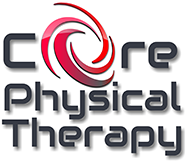Chicago’s Top Rated Local® Physical Therapy
What’s best for me? Pilates or Yoga? – Kaitlin Stewart, PT, DPT, SCS, CSCS
In the clinic, physical therapists are often asked by patients: “should I be doing yoga or pilates?” and “what is the difference between the two?”. The January blog post will be focusing on the difference between yoga vs. pilates and the benefits of each.
Pilates is named after Joseph Pilates, who developed a specific form of exercises in the early 20th century. He called his method “Contrology” and accompanied his method with a variety of apparatuses, all designed to assist with the exercises. Pilates is based on six principles: breathing, concentration, control, precision, flow, and centering. The common goal goal in pilates exercises are to improve flexibility and build core strength and endurance while focusing on balance and coordination. The core is considered the powerhouse of the body and consists of the muscles centered around the abdomen responsible for stabilizing the spine, low back, hips and glutes. Like most other exercises, pilates can be tailored from beginner to advanced and can be modified for a variety spinal conditions or pain in any area of the body.

Yoga can be used for a variety of practices including religious, spiritual and postural. As it relates to physical therapy, postural yoga is most relevant. Postural yoga, or modern yoga, is a type of physical activity that consists of postures, called asanas, followed by transitional movements called vinyasas. These movements are accompanied by breathing and most commonly some element of meditation or centering of the mind. There are many different schools of yoga each with a variety of focuses and aims. Using the posturing and transitional movements, the physical benefits of yoga can be: improved flexibility, posture, strength and tone, preventing cartilage and breakdown, increased blood flow, and heart rate and can lower blood pressure.

Both Pilates and Yoga are great forms of exercise and can be great for patients as a form of maintenance or continuing to build core strength, stability, and flexibility. Discuss with your physical therapist today for recommendations on which is best for you and for great studios in your area.

